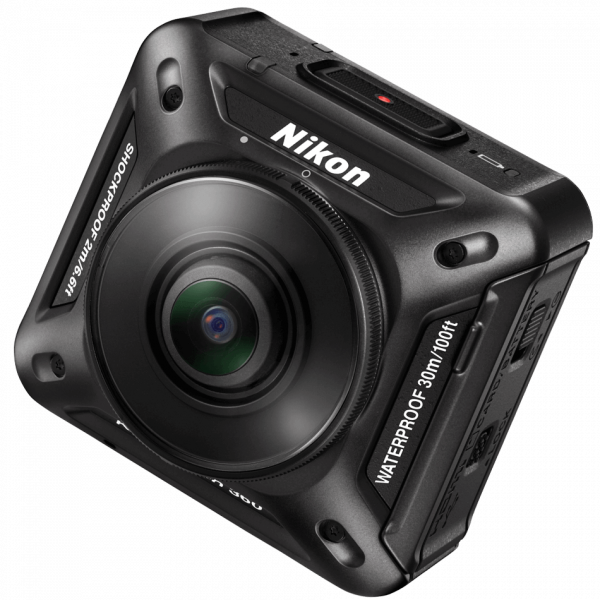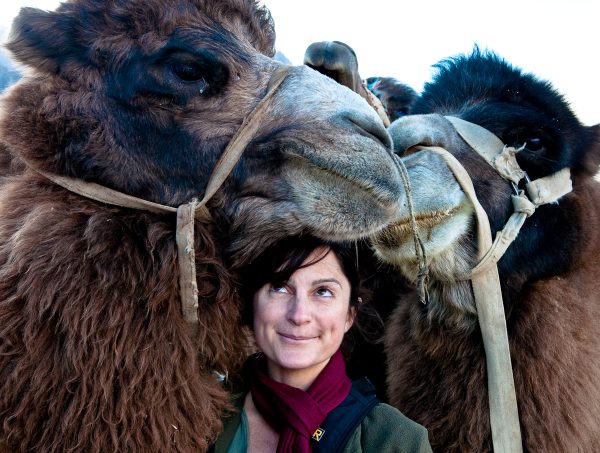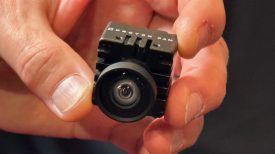Of all the adjectives used to describe VR (immersive, empathetic, game changing, etc.), “easy” has not been one of them. That’s because in VR, to date, there has been a direct tradeoff: increase usability, decrease quality.
In an industry constantly counting the Ks (4K, 8K, 12K, 16K!), quality is paramount. It has to be! VR experiences can literally make people nauseated or dizzy if the quality isn’t up to snuff.

But, if I learned one thing from Photokina 2016, it’s that easy-to-use consumer and prosumer 360 video cameras are immensely important in shaping the future of VR. These cameras are making 360 approachable for existing photographers and videographers to experiment with the medium, determine best-use cases, and define the new rules of filming in 360 degrees.

For National Geographic photographer and Nikon Ambassador Ami Vitale, 360 has simply become a part of her storytelling process. She uses the Nikon KeyMission 360 to test out the new medium, immerse her audience, and discover new ways to tell stories.
Here are three lessons she’s learned along the way.
1) Embrace discomfort, but put yourself in a position to succeed
“My philosophy is to embrace it all and I’ll figure out how it works,” Vitale said. “The truth is it’s been an incredible journey. You just have to get in the zone of discomfort.”
Vitale said the Nikon KeyMission 360 was an ideal solution because its tech requirements didn’t get in the way of her and the story. “I like gear that becomes invisible,” she said. “I’m a journalist at heart. I want to make beautiful images, but the story is super important.”
She said the KeyMission was a quick entry point that allowed her to learn this new medium.
“[The Nikon KeyMission 360] is super intuitive,” she said. “All you need to do is think of creative angles, find places [to shoot] and push the button. The stitching is done for you.”
2) Allow 360 to take you new places
“[With 360] I could find really unusual angles that I couldn’t do with a DSLR camera,” Vitale said, like watering holes with 7-ton animals traipsing about or attached to the wing of a Super Cub plane flying hundreds of miles an hour. “[The KeyMission] is super durable. I thought I’d destroy a few, but that never happened.
One unique perspective was attaching the KeyMission to a long pole attached to her backpack. “We call it the humiliator,” Vitale said. But the “humiliator” allowed her to get up-close shots at eye-level with giraffes.
She could also attach it to the lens hood of her camera and become a part of the story.
“I could put it in interesting places that give a very different perspective,” Vitale said. Finding the right applications for 360 was tricky, though. “Nature photographers are usually shooting with a really long lens, but [with 360] you have to get in there, in the mud and in the watering holes.”
3) Recognize 360 stories are (and should be) different from other mediums
“[Shooting in 360] has made me a better storyteller,” Vitale said. “It’s made me think very differently about each medium.”
For example, she said, photography is about waiting for the right moment, while film requires you to create and construct a narrative. “360 is a sensory experience,” Vitale said. So, when she shoots 360, she looks for moments that can create empathy. “[360] also made me a better still photographer because it got me thinking more deeply about the story.”
Shooting in 360 has also helped Vitale with one of her own story objectives: showing how nature and humanity exist together.
“When I watch traditional wildlife films, you see this pristine nature scene with rhinos walking through, as if there’s no humanity at all,” she said. What you don’t see are the crowds of people standing just out of frame. “We’ve framed humanity out of the picture, but that’s not really true.”
“It’s important to talk about humanity and wildlife. It gives us a way forward to start thinking of us coexisting on this planet,” she said. “I love that about 360. I was actually forced to include the human story, and we are a part of this story.”
You can find out more about Ami and her work on her website.





